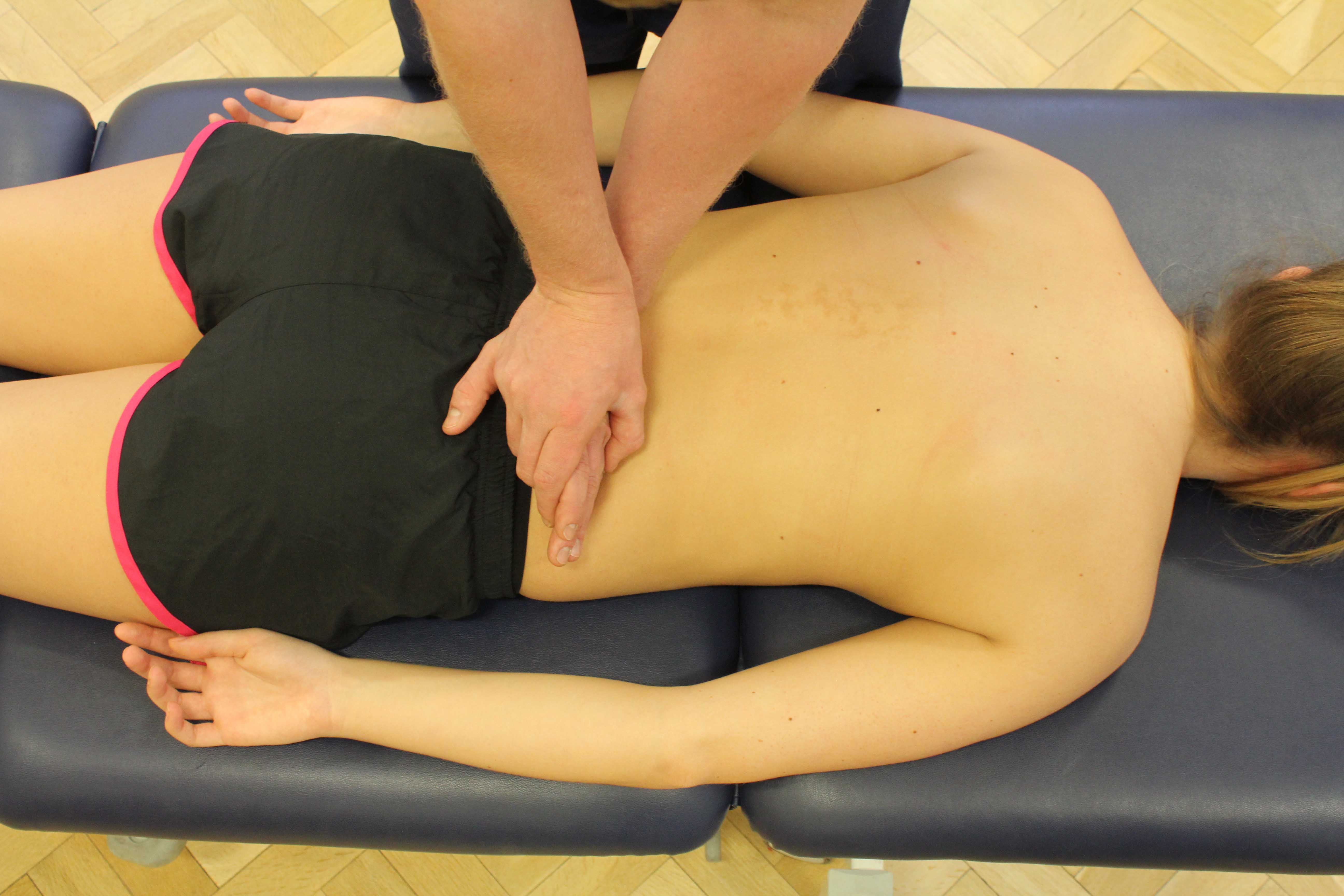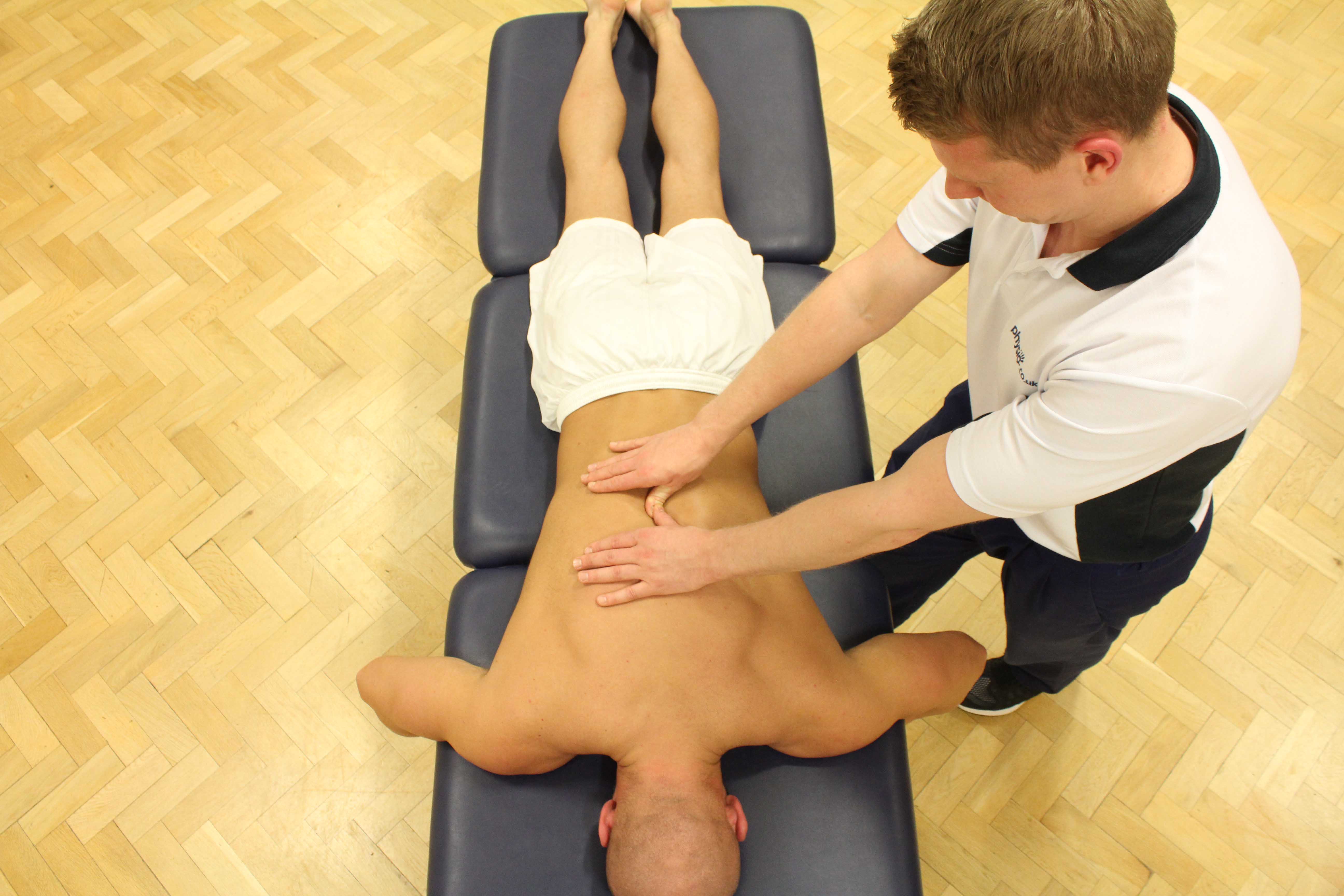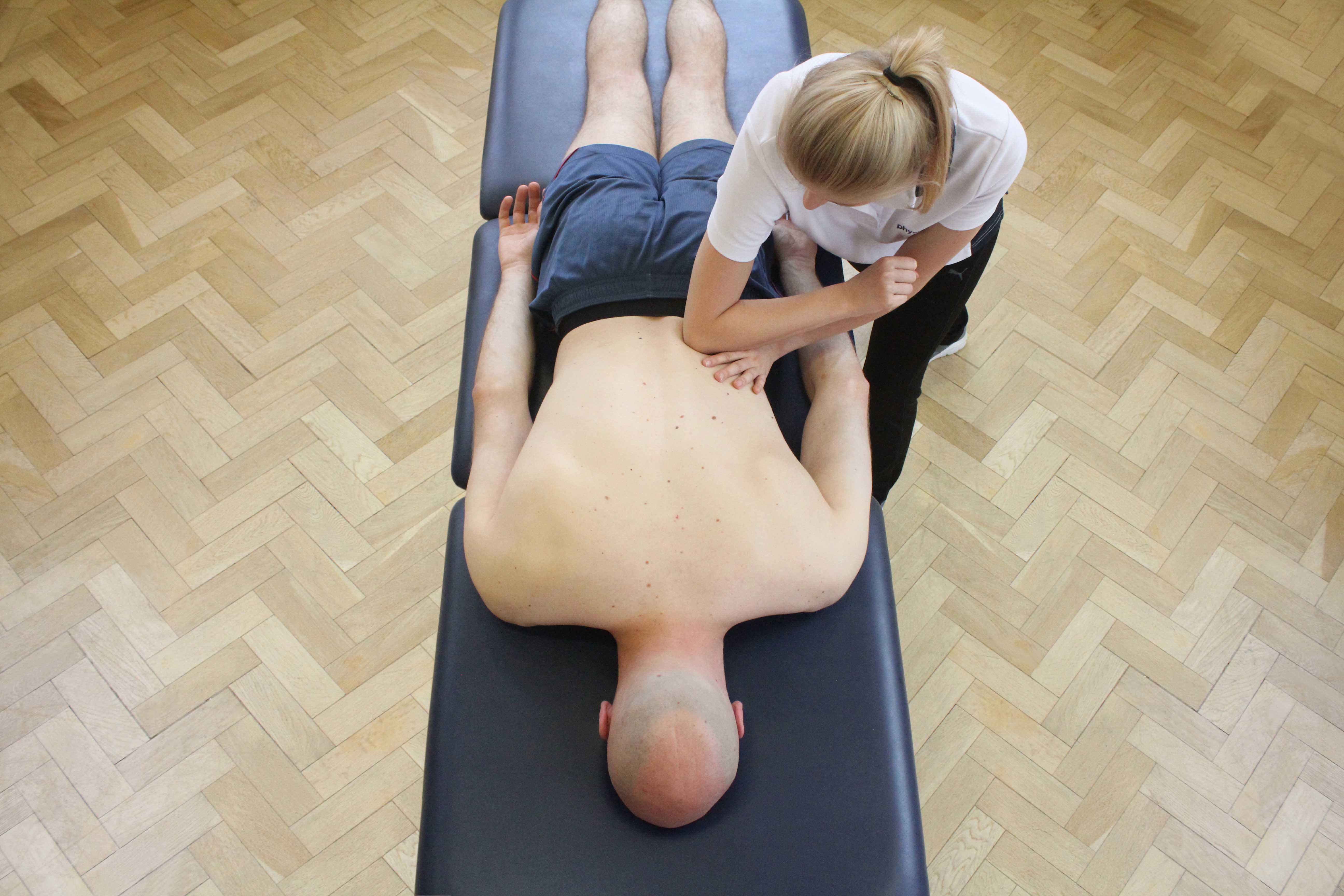What is a spondylolisthesis?
The bones that make up the spine are called the vertebrae. A spondylolisthesis is the slipping of one vertebra forward on another. Physiotherapy is an excellent treatment for spondylolisthesis.
 Above: Mobilisations of the vertebrea in the lower back by experienced therapist
Above: Mobilisations of the vertebrea in the lower back by experienced therapistHow does a spondylolisthesis happen?
A spondylolisthesis occurs as a result of damage to the rear portion of a vertebra. The rear portion of the vertebrae normally acts as an anchor to stop it from slipping forwards. When the back portion of the vertebra is damaged, it can slip forwards resulting in a spondylolisthesis.
What are the symptoms of a spondylolisthesis?
A spondylolisthesis causes pain in the lower back that is aggravated by activity, particularly activities that involve extension or arching of the back. The pain can sometimes extend into the buttocks, back of the thighs and the lower legs. In some situations, a spondylolisthesis can cause no symptoms. This type of spondylolisthesis is often discovered accidentally on an X-ray of the lower back. Additional symptoms include:
- reduced range of movement
- swelling/inflammation
- stiffness
- weakness
- numbness
- spasm
- tingling / pins and needles
 Above: Soft tissue massage of the lower back muscles and connective tissue by specialist therapist
Above: Soft tissue massage of the lower back muscles and connective tissue by specialist therapistWhat should I do if I have a spondylolisthesis?
If you have or suspect you have a spondylolisthesis, you should avoid activities that aggravate your pain and arrange an appointment with a physiotherapist.
Physiotherapy treatment for a spondylolisthesis.
The assistance of a physiotherapist is important in the treatment of a spondylolisthesis. Initially, they can assist in diagnosing the problem and determining its severity. This may require the use of imaging techniques such as an X-ray, CT or MRI scans. Your physiotherapist will then develop a treatment plan specifically for you. Your treatment may include:
 Above: Mobilisations of the vertebrea in the lower back by experienced therapist
Above: Mobilisations of the vertebrea in the lower back by experienced therapistWhat shouldn’t I do if I have a spondylolisthesis?
If you have or suspect you have a spondylolisthesis, you should avoid activities that make your pain worse until you see a physiotherapist. This is because these activities may lead to further vertebral slipping and deterioration of your condition.
 Above: Deep tissue massage of the muscles in the lower back by specialist therapist
Above: Deep tissue massage of the muscles in the lower back by specialist therapistCould there be any long-term effects of a spondylolisthesis?
A spondylolisthesis is a serious structural problem that does not repair itself. Despite this, physiotherapy treatment can usually help you continue with your life and desired activities without ongoing problems.
To arrange a physiotherapy assessment with a spinal specialist call Physio.co.uk on 0330 088 7800 or book online.

 0330 088 7800
0330 088 7800


































